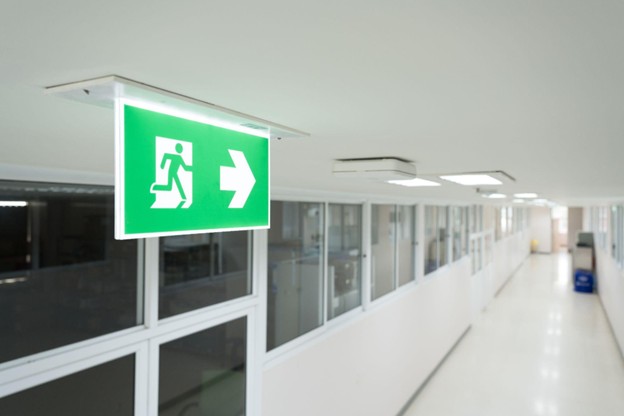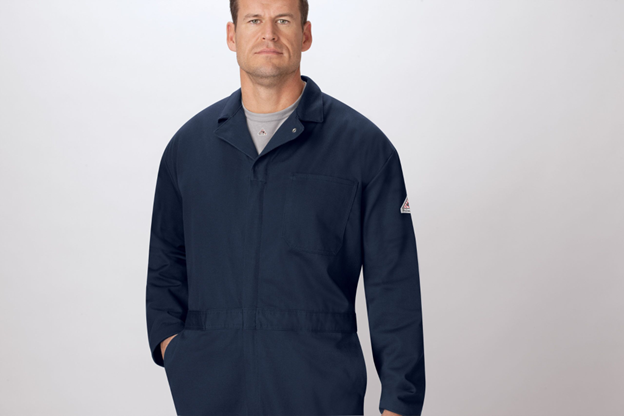MicroNet Template
Your Fire Risk Assessment Checklist: How to Identify and Reduce Workplace Hazards
Fire safety in the workplace begins with a proactive approach. Fires can devastate lives, buildings, equipment, and reputations. It’s not enough to react after a fire has started. The most effective way to manage fire safety in the workplace is through a well-structured, site-specific fire safety risk assessment.
A strong workplace fire risk assessment helps identify ignition hazards, evaluate fire spread potential, and ensure proper fire response plans are in place. For businesses in any industry, performing a fire safety assessment and developing a strategy for prevention protects both people and property.
Below, we’ll guide you through a practical fire risk assessment checklist and offer actionable steps to reduce risk. It starts with identifying hazards and ends with building a reliable response plan.

Fire Risk Assessment Basics
Fire risk assessments are typically performed in-house by a member of the company with specialized training or by a third party contracted to provide an in-depth and unbiased assessment. The assessor will look for a variety of hazards and identify risks.
A risk assessment for fire will explore:
- Possible fire hazards and those at risk from those specific fire hazards
- Developing policies to ensure the safety of people in a building should a fire occur
- Strategies to reduce the likelihood of fires
- Ensuring adequate fire alarms and escape routes exist in the event of a fire
- Mitigating potential damage from a fire
Perhaps the most important task of the person conducting the fire assessment will be to identify potential sources of fire. These sources are many, and a detailed and thorough examination of the facility will be needed to identify all possible risks.

Common Hazards Found in a Workplace Fire Risk Assessment
Understanding the typical hazards uncovered in a fire safety risk assessment allows companies to take meaningful action.
Risk factors vary by industry, but the following are frequently identified during assessments:
- Defective electrical equipment, sockets, or wiring
- Sparks from cutting, grinding, welding, or other mechanical activities
- Furnaces, ovens, or kilns in manufacturing environments
- Portable heaters and space heaters
- Improperly used or unmonitored cooking equipment
- Poorly managed chemical or fuel storage
- Overloaded electrical outlets or circuits
- Cluttered escape routes or blocked fire exits
- Dust buildup or flammable residue in industrial areas
- Arson or intentional fire-starting
Each of these issues represents a possible ignition point. A reliable fire safety checklist ensures that none of these common hazards are overlooked.
Identifying Hazards in Each Area
The most effective way to fight a fire in the workplace is to stop it before it starts. Fire prevention starts with a thorough site assessment, including identifying potential hazards, evaluating risk levels, and communicating a clear plan of action.
It is important to consider the possibility of a fire starting in each area of the worksite, including potential fire ignition sources such as machinery and electrical components. The next step is to weigh the consequences of a fire in each area and identify combustible materials that could act as fuel, including oxygen sources and flammable materials.
A proper office fire risk assessment should look at each space individually. What might trigger a fire in one department might not exist in another.

Improving Workplace Fire Safety: Practical Measures
Once the fire risks are identified, a mitigation plan must be developed. Every plan should balance practicality with safety and focus on what can be improved without disrupting operations.
Examples of effective workplace fire safety improvements include:
- Implementing new protocols for the storage of flammable or reactive materials
- Creating safe zones away from ignition sources
- Training employees to follow clearly defined fire evacuation routes
- Installing or upgrading fire suppression systems, alarms, and smoke detectors
- Scheduling regular fire drills and equipment inspections
- Updating overloaded power infrastructure to reduce electrical fire risk
- Providing and inspecting portable fire extinguishers
- Requiring flame-resistant clothing (FRC apparel) in high-risk areas
Depending on what risks they identify, fire risk assessment professionals will develop fire safety plans and recommendations for their clients. A fire assessment plan will not eliminate all risks, as some operations vital to the business may be impossible to eradicate.
Smaller risks or risks with a remote likelihood of occurring may not be addressed by the plan. However, the plan will work to mitigate the overall risk of fire and keep the company in compliance with all relevant laws and rules regarding fire safety.

Fire Risk Awareness Starts With Your Team
Employee awareness is one of the most effective firefighting tools. Employees should clearly understand the precautions that are necessary in their area to prevent a fire from starting. They should have access to appropriate equipment for their environment, such as fire extinguishers and flame-resistant clothing.
Training should be provided for responding to a fire. For example, employees should know the location of fire extinguishers throughout the facility and how to use them properly. It is important to aim a fire extinguisher low, at the base of a fire, for maximum effectiveness. Special training may be needed for chemical fires and first aid measures. Finally, the company’s evacuation plan should be communicated to the team, and escape routes should be clearly marked.
Adding fire safety training to your employee onboarding process and conducting regular refreshers reduces risk and improves response time in case of emergency.
Your Fire Risk Assessment Checklist at a Glance
This fire safety risk assessment checklist can help ensure your business is covering the critical bases:
- Inspect for ignition sources in every workspace
- Evaluate where flammable materials are stored
- Review machinery and electrical equipment for faults
- Check fire extinguisher placement and maintenance dates
- Mark and clear all fire exits and escape routes
- Verify the presence and function of alarms and sprinkler systems
- Train employees on procedures, extinguisher use, and evacuation
- Assign accountability for maintaining fire safety compliance
- Require fire-resistant clothes where applicable
- Schedule your next full workplace fire safety assessment
This checklist should be reviewed regularly and updated as your workspace changes or expands.

Fire-Resistant Clothing (FRC)
Fires have huge potential to cost companies substantial sums in lost productivity, damaged goods and facilities, higher insurance premiums, and litigation. Anything companies can do to reduce their risk will help limit their exposure to these costs and may help them avoid or reduce damages awarded in litigation or government penalties.
Devoting the time and money towards a fire safety plan and flame-resistant workwear for employees is an investment well worth making.
Fire-resistant work clothing helps protect workers exposed to flash fire, electrical arcs, or heat sources. These garments do not melt or ignite easily and are crucial in hazardous jobs.
Jobs and industries where fire-resistant clothes (FRC apparel) are commonly needed include:
- Utilities and electrical repair, such as electricians and linemen
- Oil, gas, and chemical refineries
- Pharmaceutical manufacturing and cleanroom environments
- Paint, coating, and powder application work
- Paper, pulp, and food processing facilities with dust hazards
- Workers who interact with energized electrical gear or arc flash risk
- Any workplace involving welding, cutting, grinding, or similar activities
The right FRC apparel meets the National Fire Protection Association (NFPA) 70E standards. Based on task risk categories, fire risk assessors may recommend fire-resistant uniforms for any task with flame exposure potential.
Fire-resistant uniforms can greatly assist workers in avoiding fire hazards. Fire-resistant workwear is made from textiles designed to be difficult to ignite.
Safer Teams Start With Safer Uniforms
When fire risk is part of your daily operations, fire-resistant workwear is not optional. It is a protective measure that can save lives, limit liability, and help ensure regulatory compliance.
Prudential Overall Supply offers a dependable rental uniform service that includes high-quality FRC apparel. Our fire-resistant clothes are made to meet strict safety standards and are available in a variety of sizes and styles to suit your team’s needs.
Obtaining quality FR clothes through our rental uniform service ensures consistent inspection, repair, and replacement. This removes the guesswork from uniform management and supports long-term workplace fire safety.
Take charge of fire prevention in the workplace by renting protective uniforms for your team today.
References:
Occupational Safety and Health Administration (OSHA). Recommended Practices for Safety and Health Programs: Hazard Identification and Assessment.



